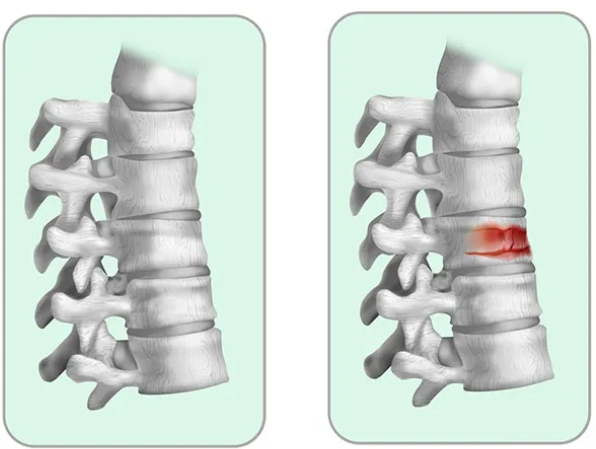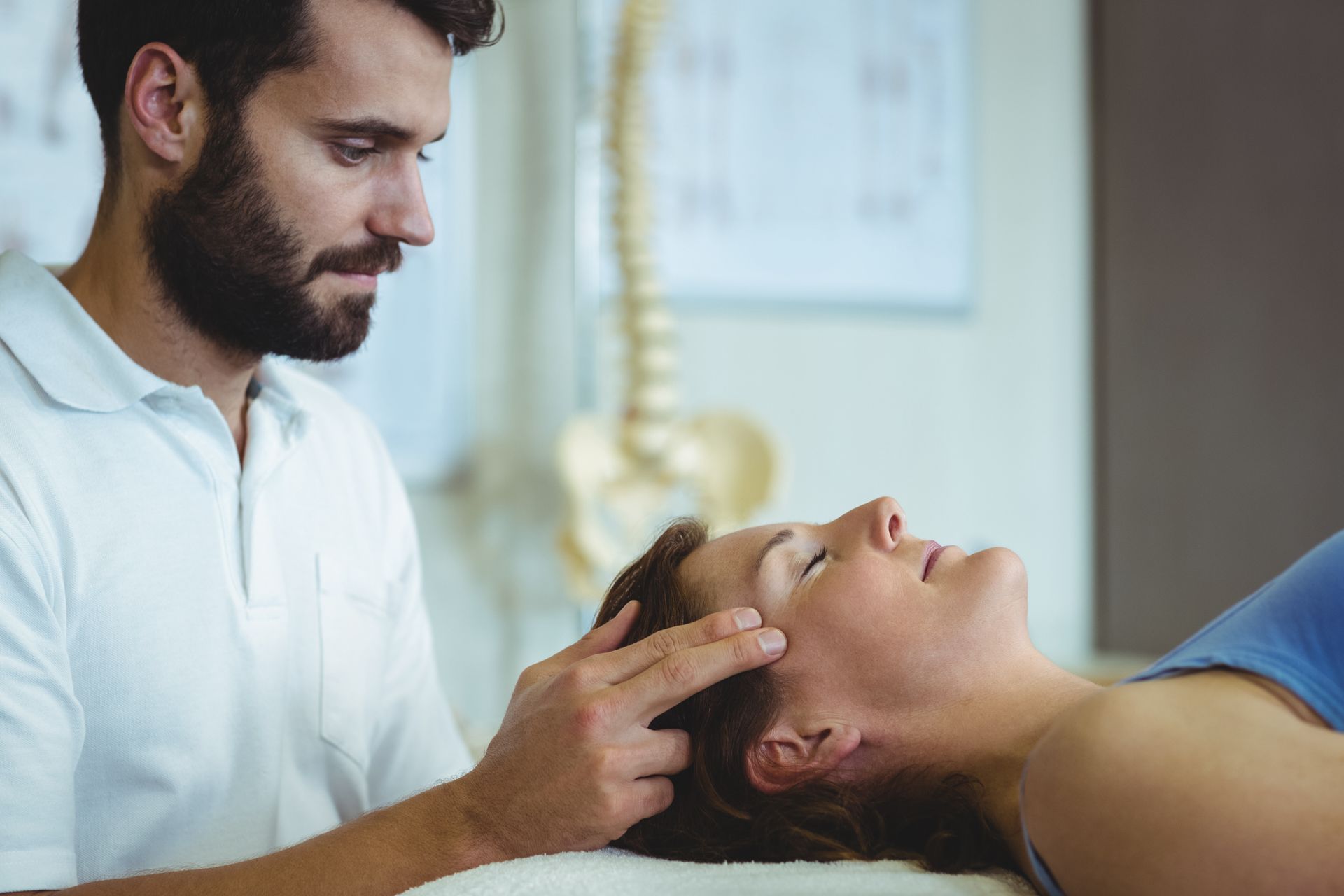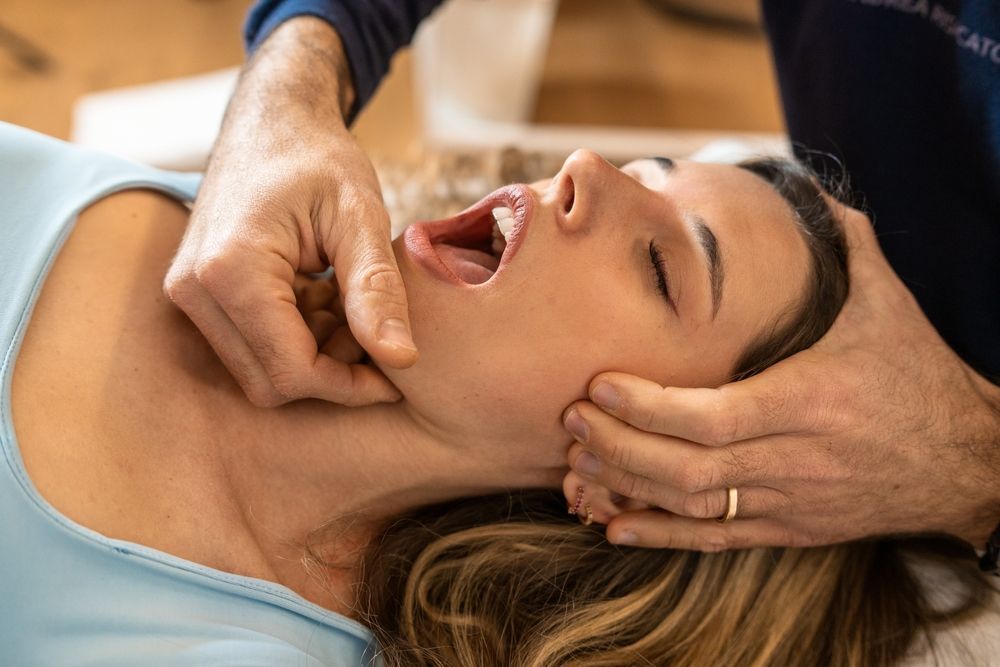Breaking Down Compression Fractures
Symptoms, Causes, and How Physiotherapy Can Help

Compression fractures are a common spinal condition, especially among older adults. If left untreated, these fractures can cause severe pain, reduced mobility, and long-term health challenges. This blog will guide you through the anatomy of the spine, what compression fractures are, their symptoms, risk factors, and the role of physiotherapy in recovery.
Anatomy of the Spine
The spine, or vertebral column, is made up of 33 vertebrae, stacked to protect the spinal cord and support body movements. These vertebrae are divided into:
- Cervical Spine (neck) – 7 vertebrae (C1-C7)
- Thoracic Spine (upper/mid-back) – 12 vertebrae (T1-T12)
- Lumbar Spine (lower back) – 5 vertebrae (L1-L5)
- Sacrum and Coccyx (base) – 9 fused vertebrae (S1-S5, Co1-Co4)
Each vertebra has a vertebral body, the thick, cylindrical part that bears most of the body’s weight. Surrounding it are intervertebral discs that cushion movement and absorb shock. A compression fracture occurs when one or more of these vertebral bodies collapse, compromising the spine’s structure.
What is a Compression Fracture?
A compression fracture happens when the vertebral body collapses, often becoming wedge-shaped, which shortens the spine. This type of fracture most commonly affects the thoracic spine but can also occur in the lumbar region.
These fractures are often subtle, occurring over time due to conditions like osteoporosis, which weakens the bones, or from sudden trauma, such as a fall or accident.
Symptoms and Signs to Look Out For
Compression fractures may vary in severity. Some key symptoms include:
- Acute back pain that worsens with movement
- Decreased height over time
- Curved upper back (kyphosis or dowager's hump)
- Limited spinal mobility
- Numbness or tingling if nerves are compressed
- Fatigue or difficulty standing for long periods
These fractures are often underdiagnosed, as mild cases can mimic typical back pain. If left untreated, they can lead to chronic pain and spinal deformity.
Risk Factors for Compression Fractures
Several factors can increase the likelihood of compression fractures:
- Osteoporosis: Weakened bones are more prone to fractures.
- Age: Risk increases with age, particularly in postmenopausal women.
- Trauma: A sudden fall or accident can compress vertebrae.
- Long-term corticosteroid use: Can weaken bones over time.
- Cancer metastasis: Certain cancers weaken the bones.
- Sedentary lifestyle: Lack of physical activity leads to bone density loss.
Osteoporosis and Compression Fractures
Osteoporosis, a condition where bones become brittle and weak, is the leading cause of compression fractures. In people with osteoporosis, even minor stresses—like bending forward or lifting light objects—can cause vertebrae to fracture. The spine’s structural integrity declines as the bones lose density, making compression fractures more frequent and harder to heal without treatment.
How Physiotherapy Can Help Compression Fractures
Physiotherapy plays a crucial role in both treating and preventing compression fractures. A structured rehabilitation program helps restore mobility, reduce pain, and improve posture. Here’s how physiotherapy can assist:
1. Pain Management
- Techniques like manual therapy, ice/heat therapy, and electrotherapy help relieve pain.
- Gentle stretches reduce muscle tension around the affected area.
2. Postural Training
- Physiotherapists guide you in correcting posture to prevent spinal deformities and future fractures.
- Strengthening the core and back muscles helps align the spine and reduce pressure.
3. Mobility Exercises
- Range-of-motion exercises improve flexibility in the spine and joints, preventing stiffness.
- Aerobic exercises, like walking or swimming, promote bone health.
4. Weight-bearing Exercises
- Programs like light resistance training encourage bone growth and prevent bone loss.
- These exercises improve muscle strength, which supports the spine better.
5. Education and Prevention Strategies
- Teaching proper body mechanics and lifting techniques to prevent further injury.
- Developing an osteoporosis-friendly exercise plan to maintain bone density and overall health.
Compression fractures, though common, can significantly impact quality of life if not managed properly. Early intervention, including physiotherapy, can prevent complications, restore mobility, and reduce pain. If you’re experiencing back pain, decreased height, or other symptoms, consult with a healthcare provider to determine if you’re at risk.
Book a free 15 minute consultation with us today at Delta Physiotherapy & Rehab at either of our convenient locations in Central Parkway or Dundas, Mississauga, and we will get you started on your healing journey!










